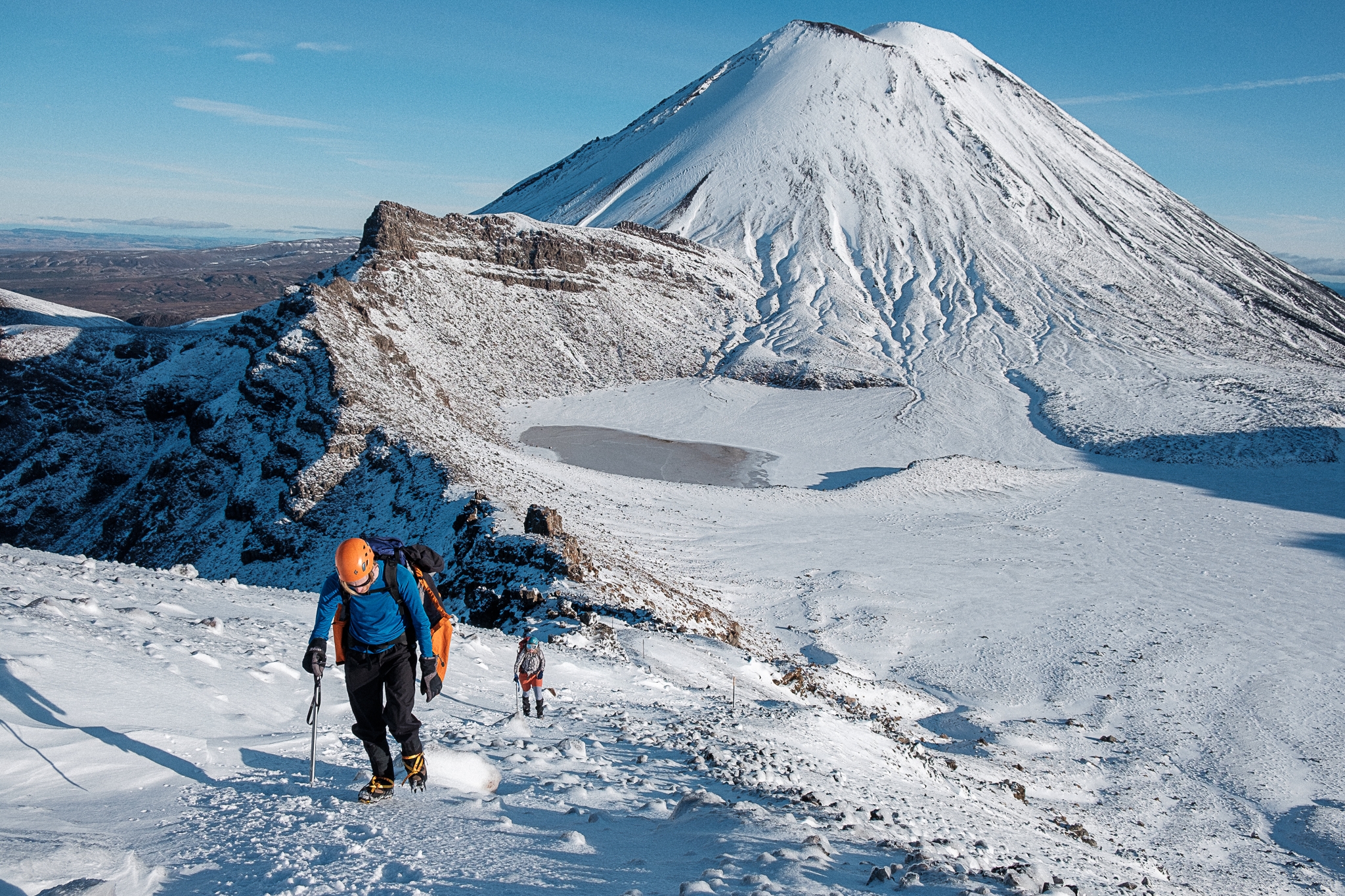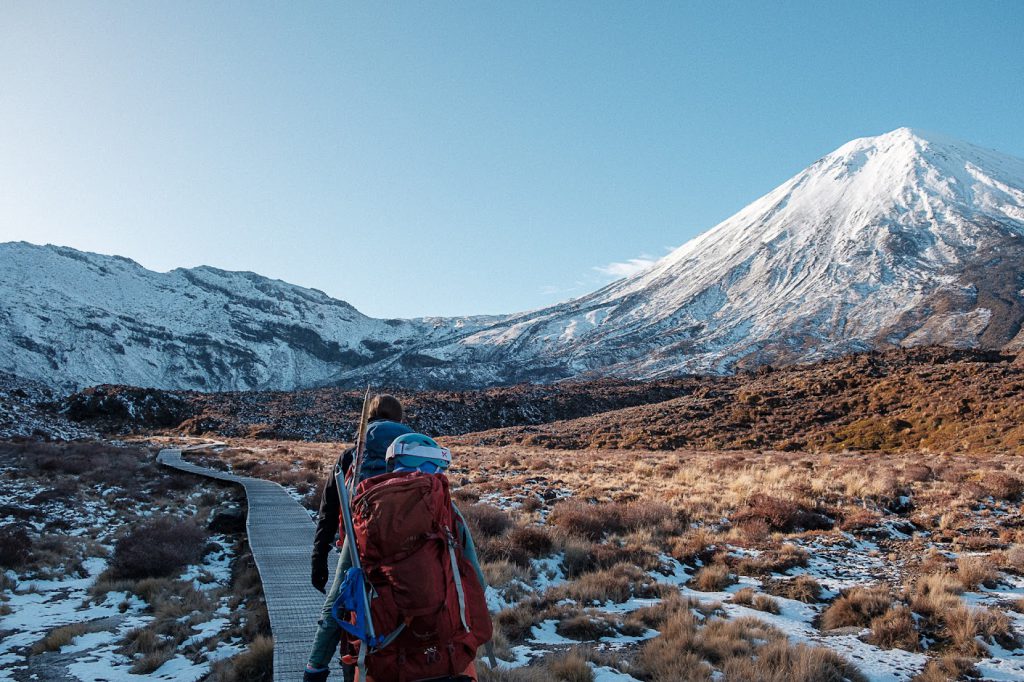
Some trip specifics
- Friday night – 2.45pm left Wellington. Arrived Mangetepōpō hut (1,190m) about 8.30pm (20 min walk in from carpark)
- Saturday, circa.9am (well hydrated and fed) – Tongariro Crossing track to South Crater. Track started getting icy near the top of Devil’s Staircase. Good place to put on crampons.
- Met tour group at junction. Guide confirmed Jon’s route beside the rock.
- Avoid the section to the right (looking up) – icy.
- Way down. Return same way. Or how good is your self arrest? (answer to self: avoid icy section, return same way)
- About 11am – back-tracked a few 100m for a ‘smoother’ walk into to the western side base of Ngāuruhoe (2287m)
- Shortly after started climbing across to the clear snowline strip beside the rocky patch. Not too technical at first but good cardio gaining ground.
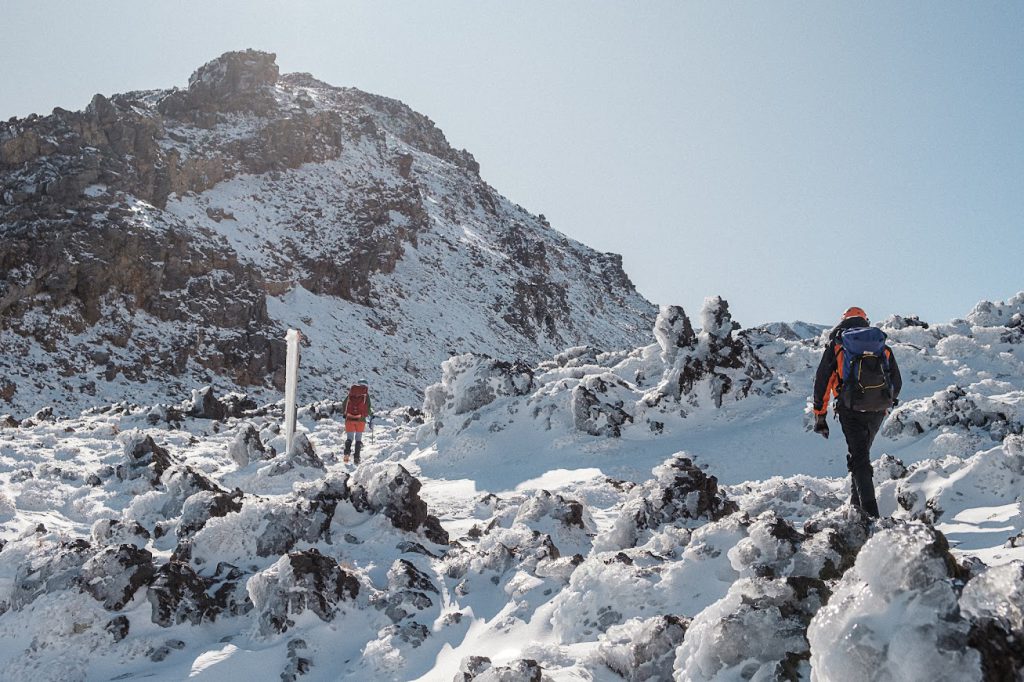
- After about an hour made it to the strip. Kept going up along with the line and then a few scrambles through rock in-between the ice.
- Great experience learning to ‘read the snow’ and picking lines/routes.
- Turning around we could see what ground (and steepness) we’d gained. Amazing views over to Tongariro and South Crater (see photos).
- About 1.15pm. Stopped about 100m from the top. We all agreed not to summit. Callum paid our respects to the local iwi.
- Slow descent. More careful route finding, reading the conditions and using different techniques.
- About 2.30pm arrived at bottom. Lunch before reaching the Crossing track.
- About 3pm, three of us headed up to Red Crater and Blue Lake viewpoint (via the Crossing track), the fourth returned to stoke the fire in the hut.
- At the highest point of the Crossing about 4.10pm (before our 4.30pm turnaround time). More views to soak in, then the return. All four back in front of the fire just after dusk.
- Sunday morning – early walk out, got to know a few of the carpark residents (see below – immobiliser), back in Wellington early afternoon.
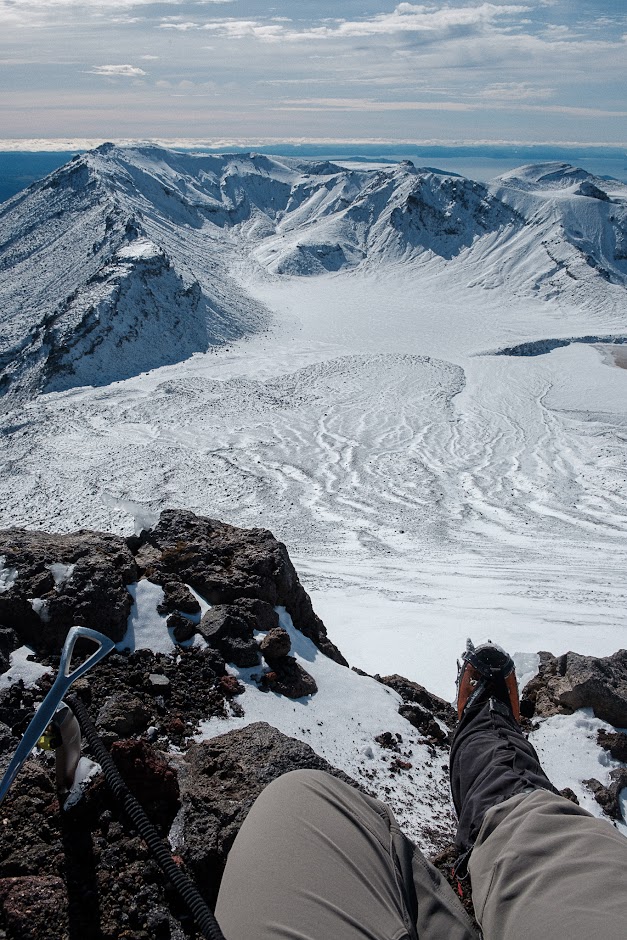
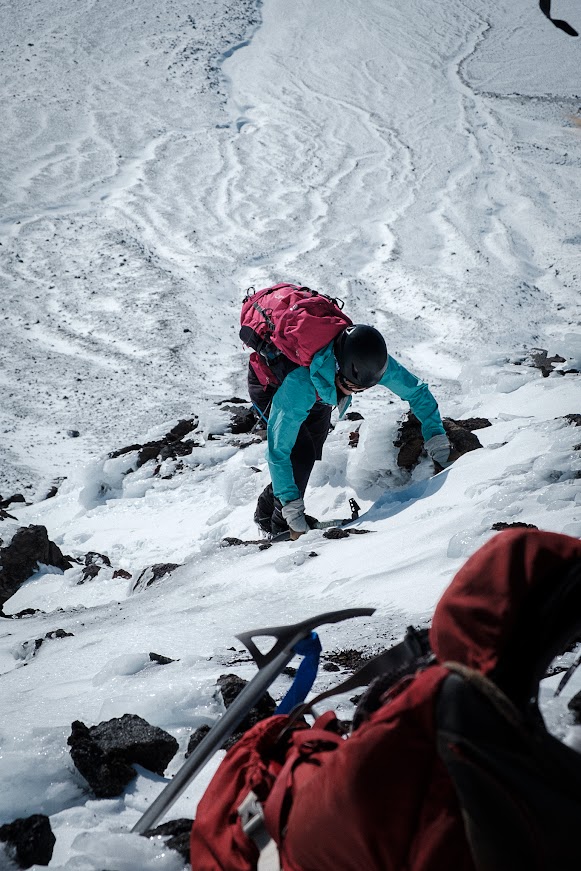
Some alpine observations and learnings:
- Spare bunks and fire embers are wonderful things after a long drive. But beware – stuff spreads, especially in bunkrooms.
- Fill your billy and water bottles up when you have running water rather than trying to do so in the morning when the tank and pipes are frozen.
- If you forget the first point, find a nearby stream, optimally if in a volcanic area, not one full of sulphur.
- Research, plan, pick the right route and company. Trust your gear and your training.
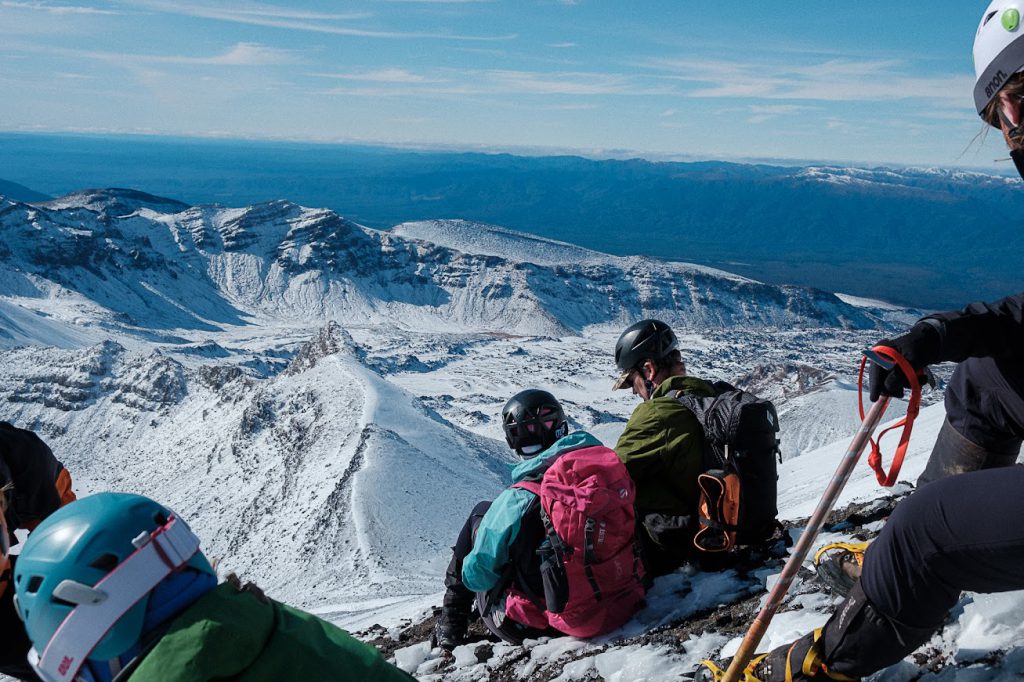

- Soak in the grand, glorious views when you have them. Enjoy the splendour regardless.
- But don’t forget the small things – from the embers and small joys throughout the day through to tiny batteries that are worth sweating over.
- If on return to the carpark you are unable to immobilise your car, there’s a high chance either you or your battery (or both) are not having good day.
- Car key and immobiliser batteries come in different sizes. Warming them up and throwing them on the ground (“shock”) may help. But may not.
- AA will help you out in some random place in the middle of nowhere but not at the busy Mangetepōpō carpark. But they will happily arrange a tow for you.
- Note CR2032. Spares are handy.
- You never know who might be able to help and how. (“We have spare batteries. That used to happen to my husband…”)
- Whatever else, rule no. 1, safety, rule no. 2 have fun and challenge. Repeat.😊
- Makes lots of memories, and take lots of photos (or go with someone who does).


